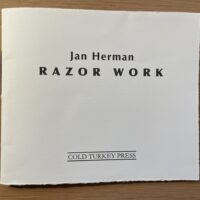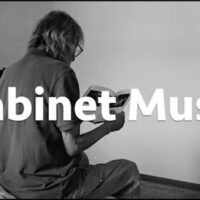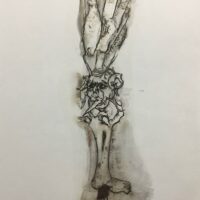It is rare to receive a gift in the mail as pristinely attractive as Phil Scalia’s immaculately produced ‘Utification,’ a chapbook of 28 remarkable photographs he took in Utica, New York.
Charming Landscape Sketches
Some poets have a talent for drawing. Mark Terrill is one. I am charmed by these sketches of his and have posted another as well. He makes no claims for them. They’re just one of his habits.
From Cold Turkey Press
‘Two Images. One Message. All at Once.’
Viewing these collages, you can feel your mind straining to integrate the images or to suspend the boundaries between the two. But you are immediately rewarded for your efforts, and the effect gets very close to Rimbaud’s “systematic derangement of the senses.” — Mark Terrill
Don’t Know What I Did to Deserve It
Steff Signer / Cabinet Music XII — Twelve More Bars to Go
A Great One Died Eight Years Ago
‘He was the Shelley of his age and more.’ — Gerard Bellaart
In Berlin
A ‘Pandora’s Box’ of Life’s Struggles and Wonders
In several media — photography, video, poetry and live performance — Signe Mähler and William Cody Maher will introduce a world in which the personal and the universal intersect and mirror one another. The pair will explore how the story of a married couple can echo both global events and private memories — using the past as a lens to see and understand the present.
Steff Signer: Cabinet Music XI
Concept & Music: Steff Signer * Photography: Mario Baronchelli *
Acrostic Poetry: Florian Vetsch * Cornet Introduction: Markus Breuss *
Poetry Recitation: Jaswant Hanspal
Channeling Rimbaud’s Last Words
The last words of Arthur Rimbaud as imagined by Carl Weissner was published in a limited handmade edition. It is a small masterpiece — small only because it isn’t longer.
‘absent minds’ / ‘patient spring’ / ‘biting elbows’
Here are three of the images under consideration for a chapbook entitled ‘biting elbows,’ to be made from a collaborative effort by Gerard Bellaart and myself during a visit to his studio in Le Liboreau, France.
This Was My Song — It Is Ours Now More Than Ever
Long, long ago — in 1970 to be precise — the Berkeley radio station KPFA borrowed a collage of mine for the cover of its guide. I had titled it “This Is My Song,” thinking of it as an obituary for the 1960s.
Visions at Midnight: Pages from a Notebook
“At first glance these collages look like they are digitally produced images owing their provenance to artificial intelligence or photoshop manipulation. But they are actual paper collages, cut-and-paste handwork in the truest sense. What sets them apart is that they are two images, one message, all at once.” Mark Terrill
‘After Words’ at The Grolier Club Tells of a Revolution
If anybody had said to me that the shaggy “mimeo revolution” of little magazines begun in the 1960s would be the subject of an exhibition as elegant as this one, and in as venerable a setting, I wouldn’t have believed it. During that period I played a small part in what was happening as the editor of a little mag myself. I thought we were participants in a rebellion more than a revolution.
Hanging In, She’d Rather Not
Cursed by Alzheimer’s.
DEATH on 23TV
The medium has changed, but . . . not the message.
Louise Landes Levi
A Voyager’s Magnum Opus: ‘The Goddess’
There are many kinds of poets. Among them are the voyaging / visionary poets, like Allen Ginsberg and Ira Cohen, both of whom were mentors to as well as models for Louise Landes Levi, who has not only traveled widely, as they did, but has turned her voyaging — that is what her kind of travels must be called — into a life of poetry and music and, not least, who has created a literary chronicle of her experience.
Fossils Dug Up from the Internet
They arrived in a dream and became a reality.
That Gaze Is a Gaze of Suspicion
And what does she suspect?
Yes, you guessed it.
Skulduggery of course.





![Heathcote Williams [Photo: JH, 2013]](https://www.artsjournal.com/herman/wp/wp-content/uploads/2017/07/heathcote-williams-photo-copy-200x200.png)











